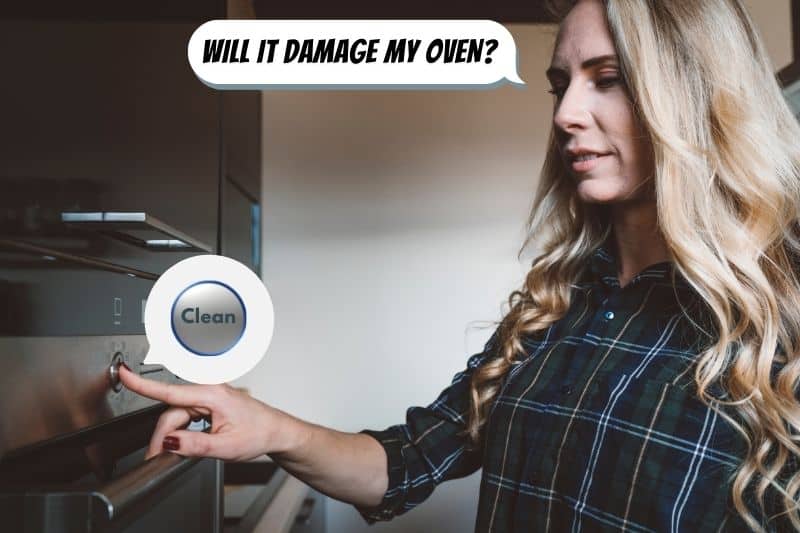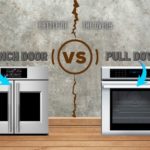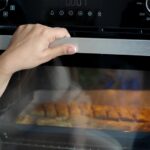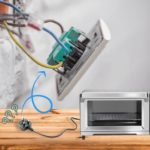Self-cleaning ovens sound like a dream come true! For most homeowners, there are few tasks as bad as scrubbing all the grime and dirt from the inside of your oven.
So an appliance that can do this horrible task for you is a welcome addition to any home, right?
As it turns out, such dreams aren’t true reality. Although the self-cleaning feature of these ovens is undeniably convenient, it comes with several drawbacks both in terms of electricity usage and health.
But does the self-cleaning feature damage an oven? Here we reveal all there is to know!
How Does a Self-Cleaning Oven Work?
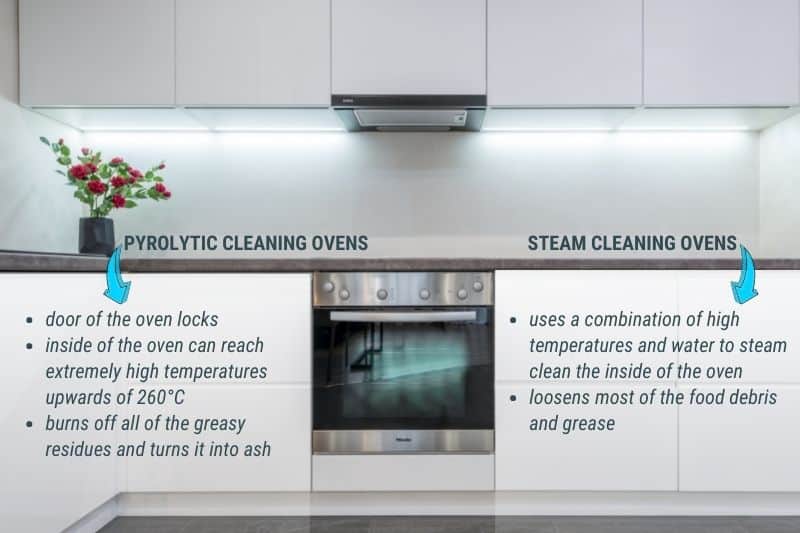
As the name suggests, self-cleaning ovens are appliances that clean away dirt and grease themselves.
You close the oven door and put the appliance on a cleaning cycle that lasts around two to three hours.
Once the cycle is over, your oven will be shiny and clean.
There are two main types of self-cleaning ovens, both of which work using different mechanisms:
- Pyrolytic Cleaning Ovens: The door of the oven locks and the inside of the oven reaches extremely high temperatures upwards of 260°C. This burns off all of the greasy residues and turns it into ash, leaving your oven as good as new.
- Steam Cleaning Ovens: These ovens use a combination of high temperatures and water to steam clean the inside of the oven. This loosens most of the food debris and grease, but you will need to clean the inside again by hand after the cycle has finished.
Does Self-Cleaning Cause Damage?
So, now on to the important part: Does the self-cleaning feature damage the oven?
As long as you use the self-cleaning feature sparingly and try and keep the oven relatively clean between cycles, you shouldn’t have any issues or technical malfunctions.
However, there is the possibility that the self-cleaning setting can damage major oven parts with overuse.
Danger 1: Heat can damage major components

Both steam cleaning ovens and pyrolytic cleaning ovens rely on extremely high temperatures. Without heat application, the cleaning cycle would not be successful.
Of course, tests were performed on the oven during the manufacturing process, and all components inside as specifically designed to be resistant to high temperatures.
Yet despite their best efforts, this high heat application can damage some of the oven’s components. Examples of oven parts that could be sensitive to heat include the following:
- Melting the insulation around the wires and connectors
- Damaging the wiring or the electrical board
- Broken thermostats and thus improper temperature readings
- Blowing lightbulbs inside the oven
Nevertheless, most of these problems only occur if the self-cleaning mode is used too frequently. The first time you use the cleaning setting, the parts will probably not fail.
However, continued high heat application can have damaging effects, and no part of your oven is safe!
Danger 2: Oven locking can malfunction
Another common issue people with self-cleaning ovens report is a malfunctioning oven lock. All self-cleaning ovens have a lock feature to ensure the oven stays firmly shut during the cleaning process.
Opening the door mid-way through a cycle is a huge health hazard! You could inhale toxic fumes or burn yourself from the extreme heat used. Therefore, a locking feature is crucial.
Self-cleaning ovens should lock and unlock automatically at the beginning and end of a cleaning cycle, respectively.
However, it is common for this automatic locking mechanism to fail after the cycle is complete.
If it gets stuck in the lock position, you have a shiny clean oven that you’re unable to use! The lock mechanism will need to be replaced by a professional before your oven can be used.

Hannah is a freelance content writer and self-proclaimed foodie. When Hannah isn’t sitting tapping at her laptop, you’ll probably find her in the kitchen. As an ex-chalet host, she’s used to cooking four-course meals for 10+ people and loves feeding friends and family whenever possible.

